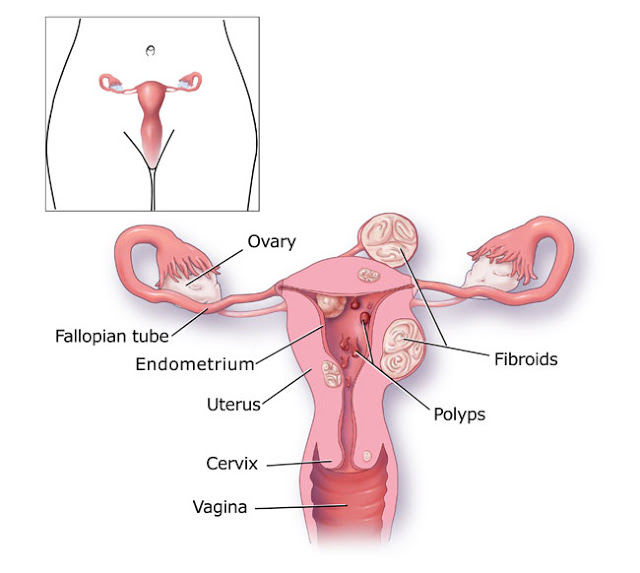 |
| 6 Dangerous Causes Of Ovary Pain You Shouldn’t Neglect |
Pain in the ovaries is familiar
to almost all women of reproductive age. While some women experience ovary pain
only during ovulation, some women face regular manifestations of ovarian
issues. However, you should know that you shouldn’t ignore pain or discomfort
in the ovaries as it can be a symptom of certain medical conditions. In this
article, we gathered six dangerous causes of ovary pain you shouldn’t neglect.
1. Ovarian Cyst
An ovarian cyst is a fluid-filled
sac that develops in the ovary. Despite the fact that most cysts disappear
after the menstruation, some of them may remain in the ovary for a long period
of time. Ovarian cysts are usually treated with antibiotics.
However, the ovarian cyst itself
is not as dangerous as its rupture. If the cyst bursts, it releases fluid in
the abdominal cavity. Moreover, ovarian cyst rupture is usually accompanied by
fever and severe pain. In the case of the cyst rupture, you should visit the
doctor as possible in order to avoid unpleasant consequences.
2. Ovarian Torsion
Ovarian
torsion is a quite dangerous condition that appears when the ovary twists
around the ligaments that hold it. In this case, it can interfere with the
normal blood supply to the ovaries and fallopian tubes. If left untreated, the
prolonged blood supply restriction can lead to tissue necrosis. The most common
symptoms of ovarian torsion include fever, nausea, vomiting, and severe pain.
Ovarian torsion is also accompanied by abnormal bleeding and requires immediate
medical attention.
3. PCOS
Polycystic ovary syndrome (PCOS)
is a condition that affects not only ovaries but the whole body as well. PCOS
is a hormonal disorder that affects many women of childbearing age. If a woman
suffers from PCOS, it means that she has an increased level of the male hormone
called androgen.
The most common symptoms of
polycystic ovary syndrome include irregular menstruations, acne, facial hair,
and ovary pain. With PCOS, the ovary can have a lot of follicles that interfere
with the normal egg release. You should also know that PCOS is considered one
of the most common causes of infertility. That’s why it is better to visit a
gynecologist if you have noticed at least several symptoms listed above.
4. Endometriosis
Endometriosis is a condition that
means the overgrowth of the uterine lining (endometrium). This disease develops
in the uterus and then can spread to the ovaries, fallopian tubes, bladder, and
other pelvic organs. The endometrial tissue continues to shed during the
periods even if it is not in the uterus. Blood and tissues have no exit and
this leads to severe pain. When the endometrial tissue reaches the ovaries, it
can also restrict the egg release and block the fallopian tubes. This may also
result in infertility.
5. Salpingitis
Salpingitis is a disease that can
develop as a result of untreated sexually transmitted infections (STIs). It
affects fallopian tubes and causes inflammation in them. The most common
symptoms of salpingitis include:
● Abnormal Vaginal Discharge
● Pain During Sex And Ovulation
● Spotting
● Fever
If you have noticed such
symptoms, you should visit a doctor as soon as possible. Due to the fact that
salpingitis is accused by STIs,
you should undergo treatment together with your partner.
6. Ovarian Cancer
Ovarian cancer is a dangerous
condition since in many women it can develop asymptomatic. However, it can
cause pain and unpleasant sensation when cancer spreads from ovaries to other
reproductive organs. In advanced stages, ovarian cancer can cause bloating,
swelling, and weight loss. Due to the fact that it is not easy to recognize
ovarian cancer by yourself, regular gynecological visits are essential
especially if you have a family history of ovarian cancer.
